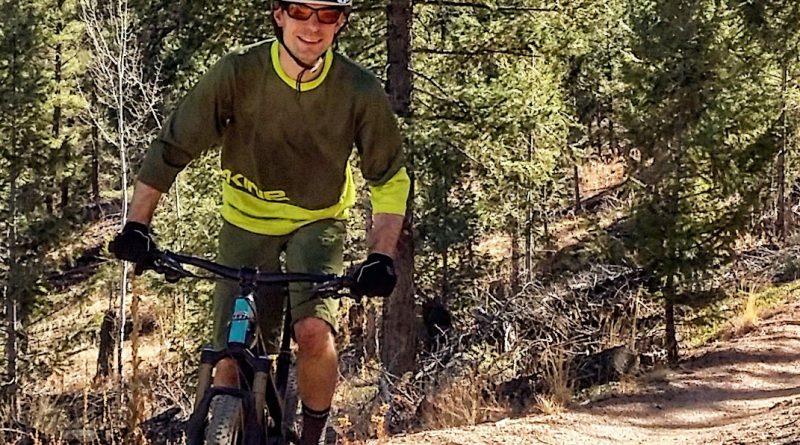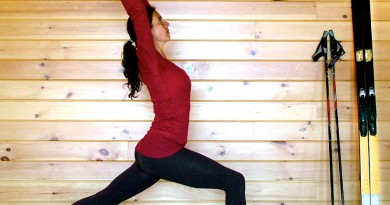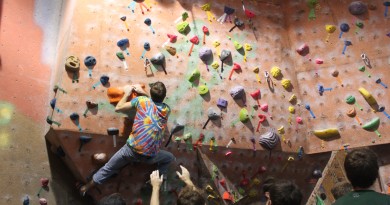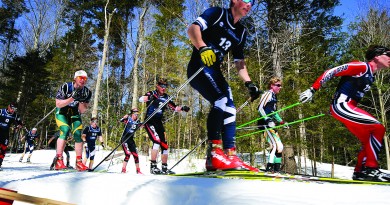Strength In Numbers
By Mike Donohue
The outdoor industry has the power to protect land, around the U.S. and here in Vermont.
When the Outdoor Gear Exchange opened its doors in Burlington 1995, we had no idea that the store would grow from an 800-square-foot gear closet into the Church Street community hub that it is today. Like many of the folks in the outdoor industry (which includes gear shops, manufacturers, outfitters and ski areas), we were simply adventurers looking to live the dream.
Now, with the wisdom of time, we feel it’s our duty to fight to protect and preserve cherished wild places, be they large or small. We want to ensure our adventures can continue and protect connected habitat.
Changes in the outdoor industry—locally and nationally—are almost as gripping as current national news headlines. Vail is buying Stowe. Eastern Mountain Sports is filing for bankruptcy for the second time and climate change continues to affect Vermont’s recreation economy by both shortening the winter and ushering in more extreme weather events.
Even with the chaos, there are signs of hope for conservation and many paths forward. Thanks to lobbying by the Outdoor Industry Association (OIA), the voice of the outdoor recreation industry, the Outdoor REC act passed the House of Representatives with unanimous support and was signed into law by President Obama last December.
This now means the impact of outdoor recreation will be measured as part of the U.S. Gross Domestic Product (GDP). The OIA also commissioned an Outdoor Recreation Economy report, which shows that outdoor recreation contributes $646 billion in consumer spending to the U.S. economy, provides 6.1 million American jobs and contributes $80 billion in tax revenue. The “Outdoor Economy” is nearly as big as the pharmaceutical industry and motor vehicle sales and parts combined: we employ more Americans than education or construction!
There is strength in numbers, and these numbers are emboldening industry leaders to take a stand for what is right for industry, recreationalists at large and the environment.
The Power Of A Protest
For the past 20 years, outdoor business leaders, gear manufacturers, media, guides, and nonprofits have gathered in Utah twice annually for Outdoor Retailer, a trade show that contributed $45 million annually to the state of Utah. During that time, we worked with the state to encourage land conservation and to prevent repeal of protections. We were led by industry pioneers like Peter Metcalf, Black Diamond’s CEO and Yvon Chouinard, founder of Patagonia.
In the last few months, Chouinard and Metcalf have helped lead Outdoor Retailer out of Utah in an act of protest against how the state is treating its public lands.
First, a little history: In 2007, the Outdoor Industry Association (OIA) was able to maintain roadless protection of 4 million acres of national forest lands, leveraging the recreation community’s impact in Utah with a petition signed by more than 400 trade show attendees. This was the culmination of a campaign that started in 2003 when Metcalf threatened to pull the OR trade show from Utah over the issue. Fast forward to 2012 and a new Utah governor: Metcalf again took a public political stance by pulling out of a Utah Industry manufacturers group to protest Governor Herbert’s campaign to again try to repeal wilderness protections from millions of acres of federal land.
Now it’s 2017, and Governor Herbert is asking the Trump Administration to revoke Bears Ears National Monument. According to Metcalf, “Herbert and Utah’s D.C. delegation are leading a national all-out assault on the sanctity of Utah and the country’s public lands.” In response, the Outdoor Industry is putting its money where its mouth is.
On February 16, Outdoor Retailer trade show director, Marisa Nicholson announced that Salt Lake City will no longer be the home of OR. The show will move to a state that is aligned with the industry’s values, taking its economic stimulus with it.
In addition, Emerald Expositions, the trade show’s parent company, will not consider relocating Interbike, a large bicycle trade show, to Utah. In further solidarity NAHBS, the North American Handmade Bicycle Show, is not considering Utah for any future shows “unless serious changes are made by government officials.”
It’s a pivotal moment—not just for the outdoor industry but for anyone who loves to ski, bike, paddle, climb, snowshoe, fish or engage in any type of non-motorized recreation.
Protecting Vermont’s Land
We need to build on the legacy of public lands being set aside for the good of all, for recreation and habitat, and for the protection of our national resources. Here in Vermont, this is a trend that is, thankfully, continuing.
Despite all the open land surrounding our villages, less than 20 percent of Vermont’s rural landscape is conserved. Strong nonprofits like Vermont Land Trust, Vermont Nature Conservancy and the Trust for Public Land fight to prevent habitat loss due to fragmentation and development. Their efforts also help preserve resources for recreation and protect the spaces where people can gain and cement their appreciation for nature.
Recent conservation success stories include the conservation of Barre Town Forest and the Millstone Trails, West Windsor’s purchase of Ascutney Mountain, where it opened a community run ski area, and the Bolton Valley Nordic and backcountry area. The Outdoor Gear Exchange supported these projects through our membership in the Conservation Alliance, which partially funded them.
On town meeting day, Richmond voters permanently protected the 428-acre Andrews Forestland, turning that parcel into a new town forest. Richmond town forest will continue to serve as a place where we can hike, bike, snowmobile and hunt. It will also remain a key link in a significant wildlife corridor that aims to preserve habitat connecting Mt. Mansfield to Camel’s Hump through the Winooski River Valley.
In adjacent Williston, the Trust for Public Lands is working with the Catamount Outdoor Family Center to designate the 400-acre property, the largest unbroken tract of forest remaining in the town, as a town forest as well.
It is becoming clear, as OIA says, that “together we are a force.” It makes me proud as a Vermonter and a member of the outdoor industry that so many of us agree that conservation is key and that focusing on preserving land is the long view.
Doing that will make sure we can have our wild playgrounds, connected habitats and protect our environment for the future. It’s proof that strong working landscapes, wildlife populations and recreation opportunities can all co-exist in Vermont.
Mike Donohue is an owner of The Outdoor Gear Exchange.




